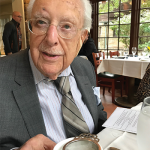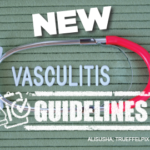Clinicians must realize the inherent limitations of any clinical practice guidelines, including those produced by the ACR. In the absence of a perfect evidence base, guidelines can still provide helpful, evidence-based guidance for those making clinical decisions.
ACR guideline writers make clear that clinical guidelines are not prescriptive & should be used by clinicians & patients only as a guide for discussion.
How Are the ACR Guidelines Generated?
The ACR strives to produce guidelines that provide the best possible evidence-based guidance to clinicians, while being transparent about any limitations in the evidence base for particular recommendations. The ACR guideline development process complies with standards from the National Academy of Medicine (formerly the Institute of Medicine) and the Council for Medical Subspecialty Societies. ACR guidelines are developed using a rigorous, multi-step process involving several coordinated groups of experts. Prior to the process, all members of the guideline group undergo orientation to prepare them for their specific roles.
The first step is assembling a group of experts who will work to develop the guideline, starting by identifying the project’s scope. Tuhina Neogi, MD, PhD, FRCPC, is a practicing rheumatologist and professor of medicine and epidemiology at the Boston University School of Medicine. She participated in developing the 2012 gout treatment guidelines, and she is one of the core team leaders for the osteoarthritis guideline, currently in process.

Dr. Neogi
Dr. Neogi explains, “Usually the people who are leading the effort [help the ACR] identify appropriate candidates to populate the broader team that will be working on the treatment guidelines.”
Liron Caplan, MD, PhD, is an associate professor of medicine and rheumatology at the University of Colorado School of Medicine in Aurora, Colo. He was the literature review leader for the ACR’s axial spondyloarthritis (SpA) guideline and currently serves as the ACR Guideline Subcommittee chair. Dr. Caplan says, “In the case of the ACR, they require that more than half of the guideline development team have no conflicts of interest with regard to industry support in the topic area of the guideline.” The team includes members with content expertise and expertise in methodology and guideline development.
The next stage is identifying the most important clinical questions and outcomes the guideline needs to address. An expert panel works with the broader guideline development team to provide guidance and advice on the most clinically appropriate questions to include. “There are many more questions than are feasible to be addressed in a given treatment guideline,” says Dr. Neogi. “To have the treatment guidelines be relevant and also doable and digestible, there has to be some curation involved.” Before proceeding further, members of the larger community have an opportunity to shape these questions via a public comment period.



